Fenix PD36R review
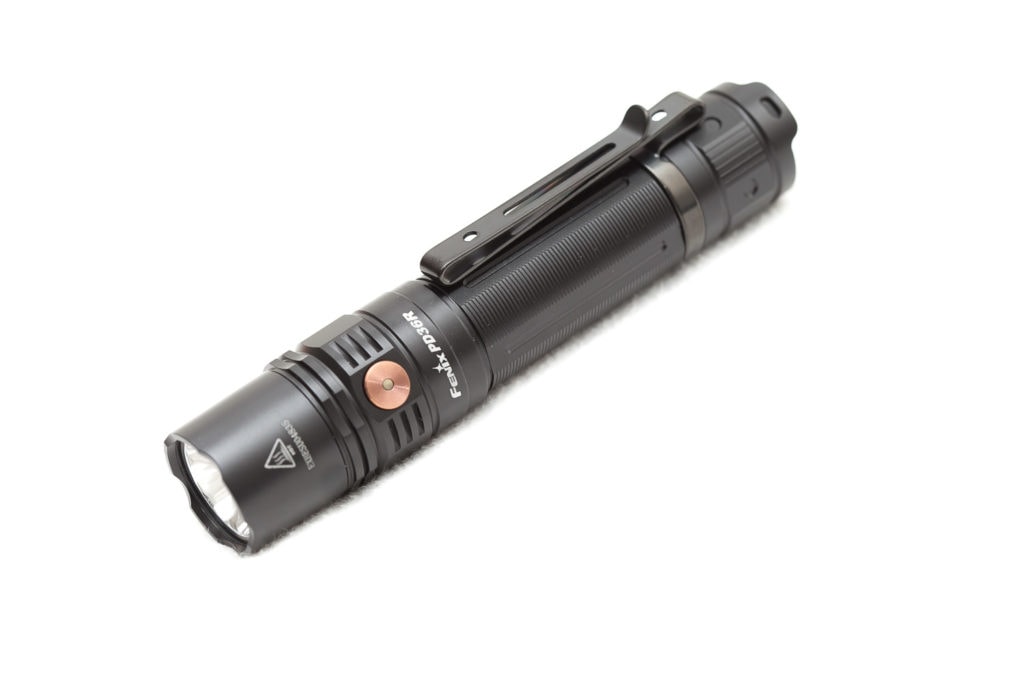
Specifications:
| Brand / Model | Fenix PD36R |
|---|---|
| LED | SST40 |
| Lumens | 1600 |
| Beam intensity | 19977cd |
| Battery config. | 1*21700 |
| Material | Aluminum |
| Modes | 5 |
| Blinkies | Strobe |
| Reflector | smooth |
| Waterproof | IP68 |
| Review date | October 2019 |
Intro Fenix PD36R rechargeable
I’m excited to start this review! I haven’t owned many Fenix flashlights, and the PD36R has drawn my attention since the older PD35 TAC has been many people’s favorite tactical flashlight for the last 3 or 4 years. The PD36R sport a 1600 Lumen Luminus SST40 LED and includes a USB-C connector to charge the included 21700 battery. In my opinion, this flashlight has all the potential to be a great all-rounder. We’ll have to see how it performs.
If you look at all the accessories it came with, I’m positively surprised. This amount of high-quality accessories I like a lot. I bought this flashlight on Aliexpress, but you can get them anywhere you want.
What you’ll get:
- Fenix PD36R
- Lanyard
- Holster
- USB-C charging cable
- Fenix 21700 battery
- Spare O-rings
- Deep carry pocket clip
- Warranty card
- Brochure
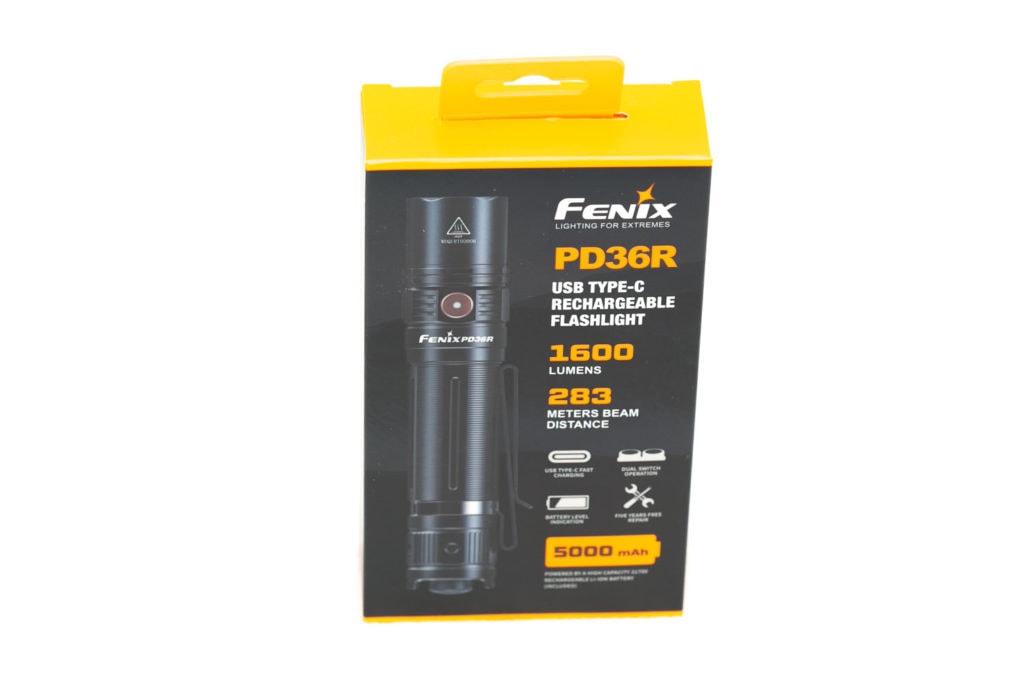
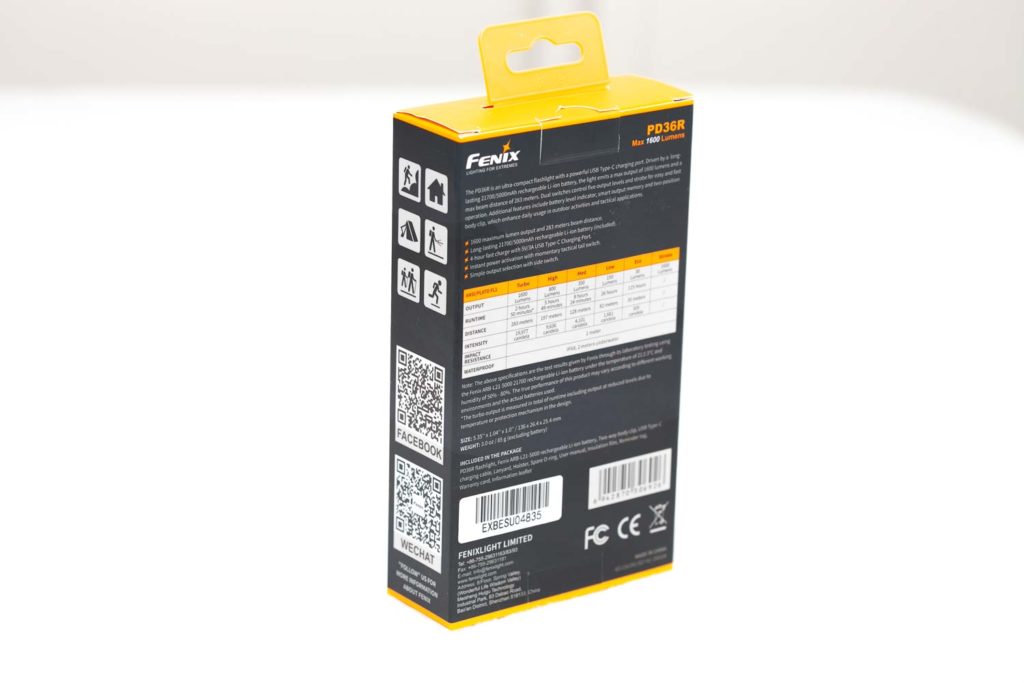
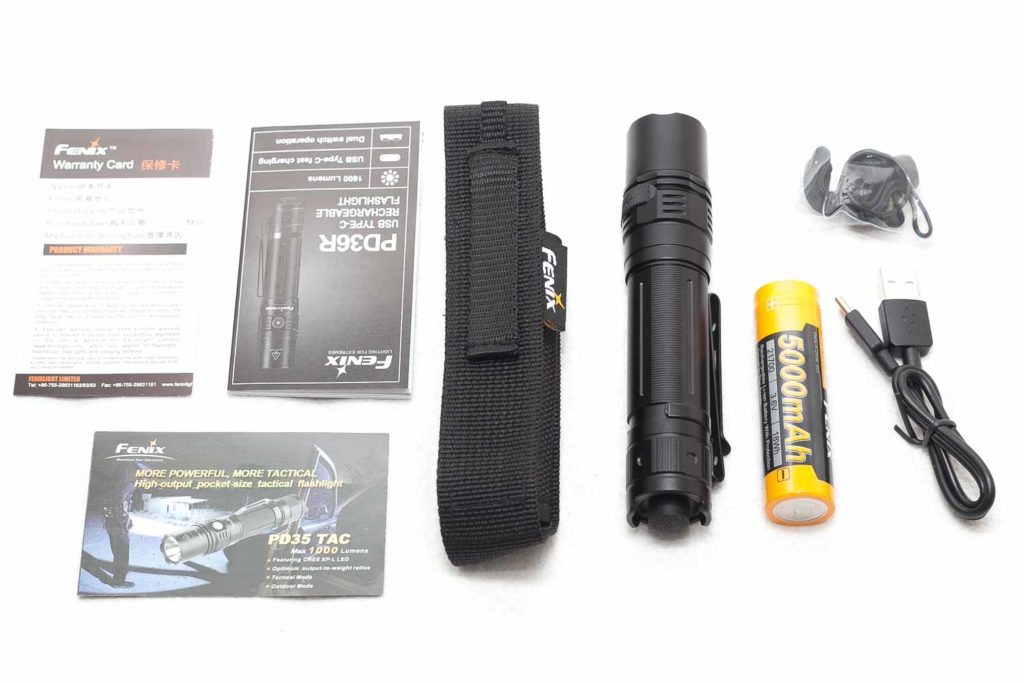
Handling of the light
The PD36R is a 21700 battery-type flashlight. This means that the diameter of the body is wider than your typical 18650 flashlights. The 2-way deep carry pocket clip lets you carry it the way you want. This kind of clip is definitely one you usually only find on a high-end flashlight. And the PD36R is one of them.
If you rather want to carry it on your belt, they even included a nice holster.
With the knurling, it doesn’t feel slippery at all, and the pocket clip adds some extra grip.
The PD36R has a forward clicky switch, which is the typical Tactical switch you can find on this type of light. It is used for power, and the side switch is used to change modes. The main switch can be used for morse coding and won’t change the output. If you hold it in the way I pictured below, you can use your pinky to change modes if you need to. This is not the easiest way to do it, but it will do.
The pocket clip is spray painted, but I don’t want to test its toughness. Most of the time I just break it.. and I feel like that is a waste of my money. lol.
Tail standing:
- Nope. This is not meant to be tail-standing
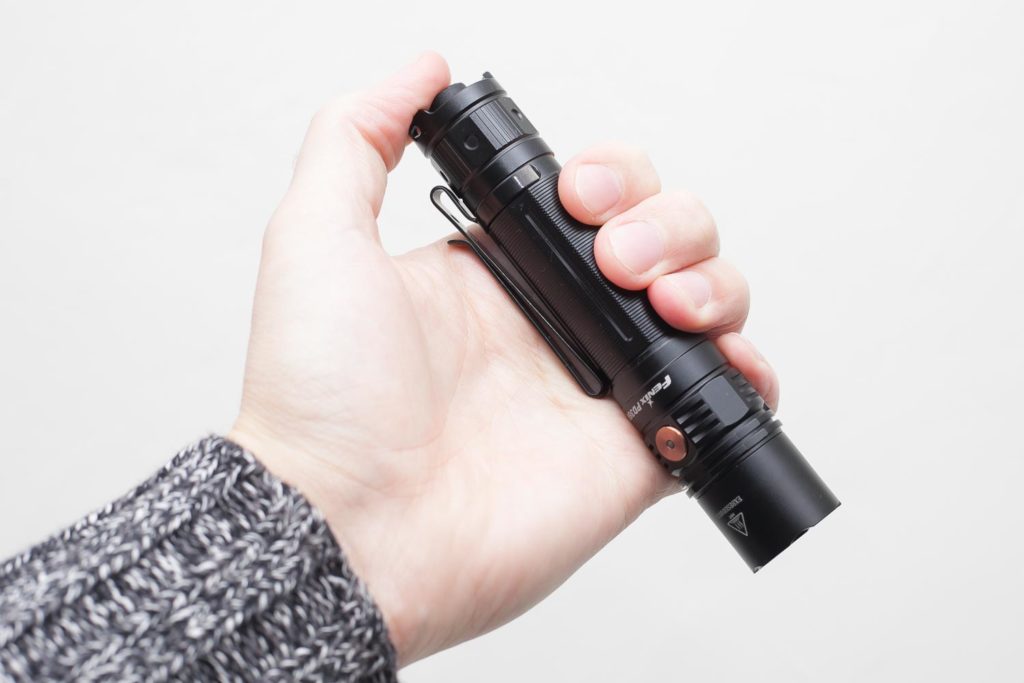
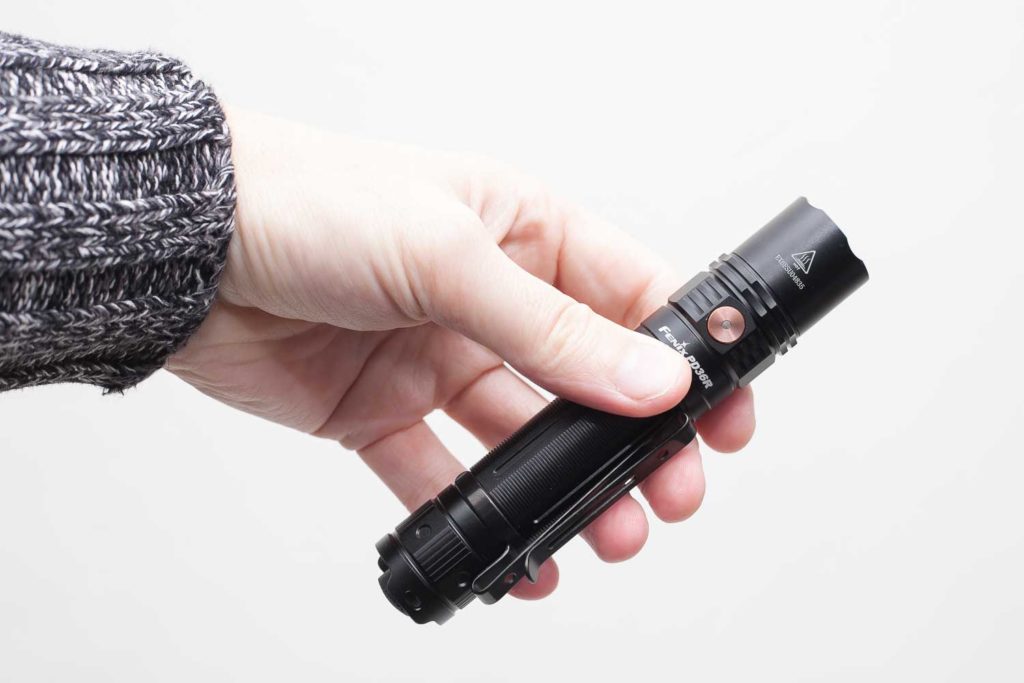
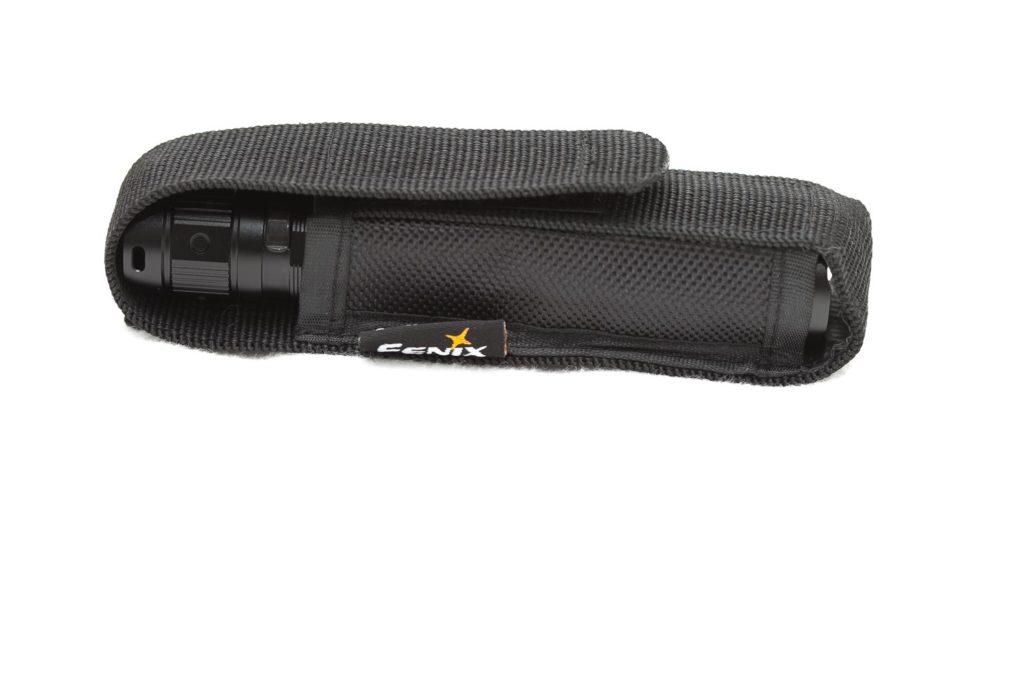
Build Quality, knurling, threads, and anodization
The anodization of the PD36R is spotless. Nothing to complain about the quality. The thing I don’t like so much is the shininess. It looks a little cheap IMHO. This doesn’t mean that the quality is subpar, it just means that it doesn’t look as good as Jetbeam’s anodization. That’s all.
The flashlight body has some knurling to increase grip. It’s not slippery at all. For the rest, it looks like many other kinds of aluminum torches…. ahum flashlights.
The PD36R has 2 main parts, the head, and the body. There is no tail cap. The switch is attached to the battery tube, and can not be separated. This means there are only 1 set of threads. Very nicely shaped, and with just a bit of lubrication. A little on the conservative side though.
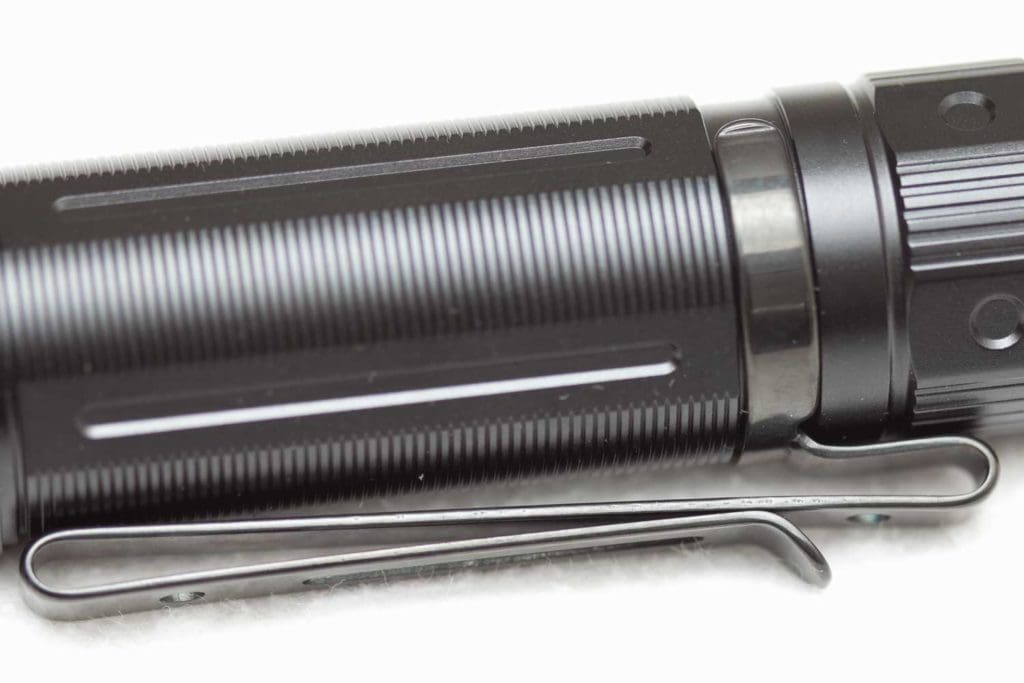
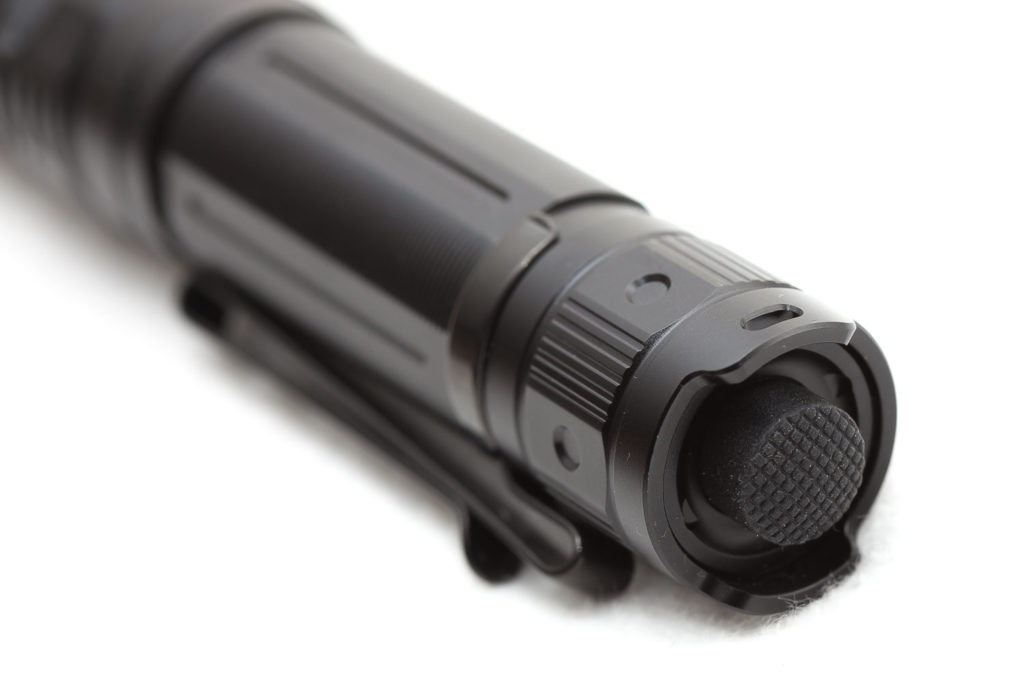
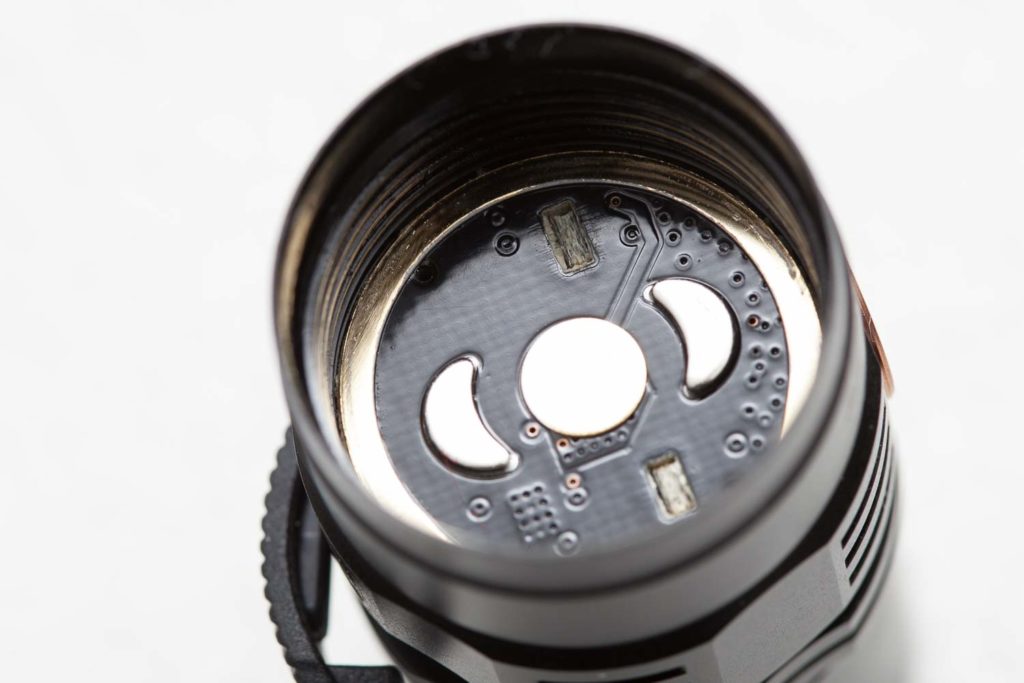
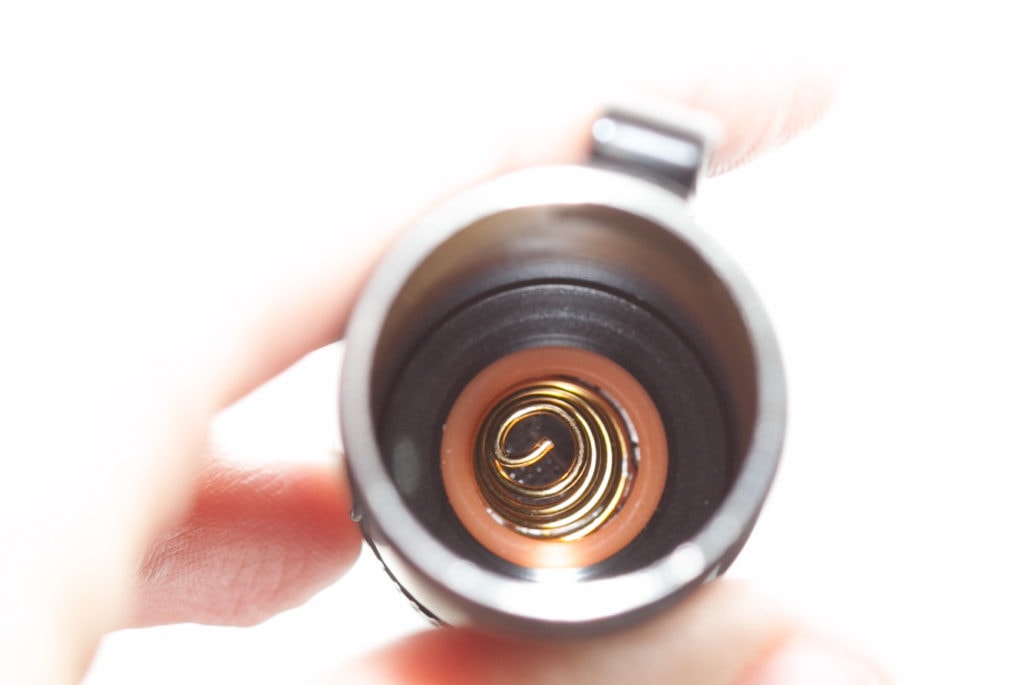
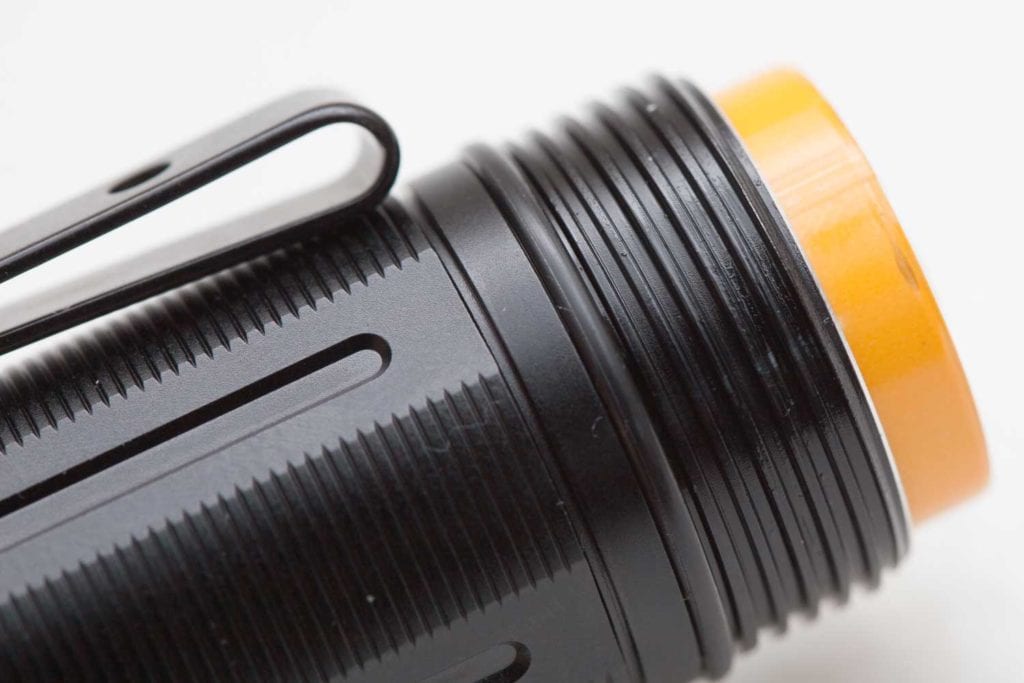
LED, Lens, Bezel, and Reflector
This starts to get a little more exciting. Fenix decided to add a Luminus SST40 with a maximum output of 1600 lumens. Later more about the lumen part.
The bezel is lightly crenelated and glued, so I can’t take it apart. The glass is said to be “toughened ultra-clear glass lens with an anti-reflective coating”. Behind the glass lens, you find a smooth reflector. The Luminus SST40 is well centered.
Fenix doesn’t let you choose the tint, unlike the smaller manufacturers who let you choose the LED tint you like. Without the proper equipment, I can’t really tell the exact color temperature (Kelvin). The beam is a little greenish though.
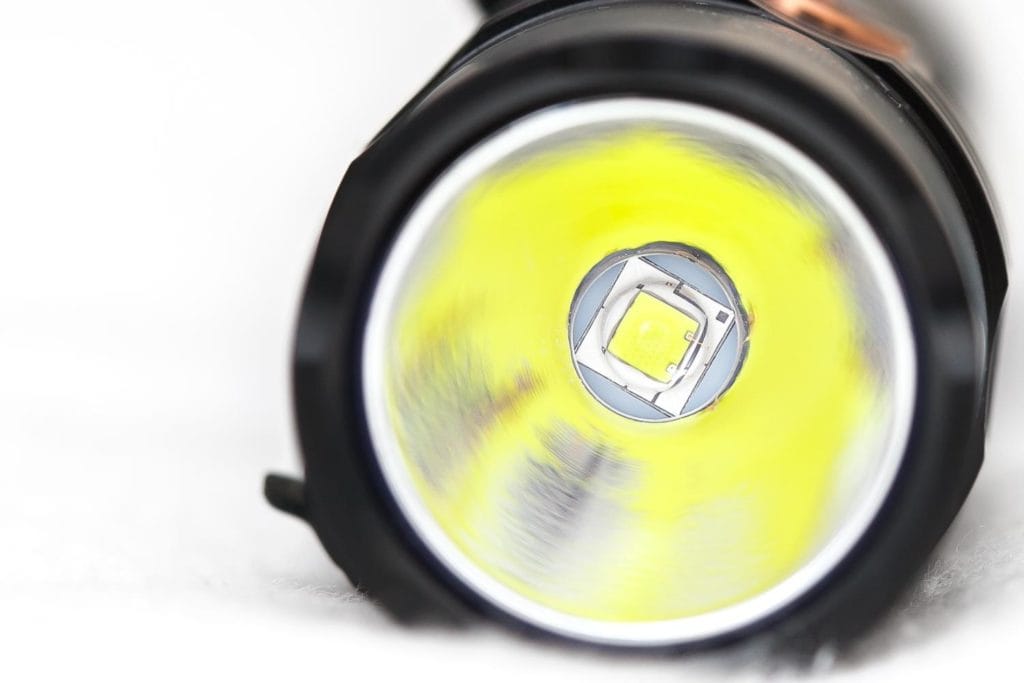
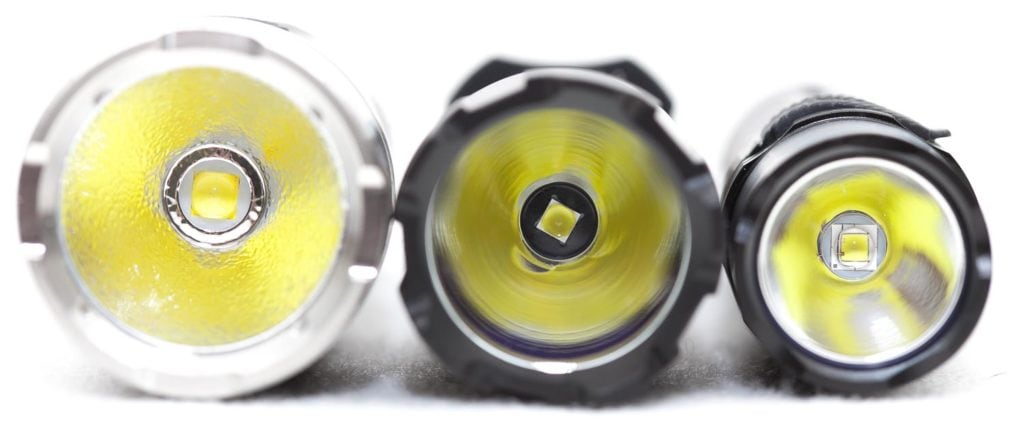
Dimensions:
- Length PD36R: 139mm ( 5.47″)
- Head diameter: 26.7 mm ( 1.049″)
- Body diameter: 25 mm ( 0.98 “)
Weight:
- Empty: 90 g ( 3.17oz)
- With battery: 162.9g ( 5.75oz)
- Fenix 21700 Battery: 72.8 grams (2.57oz)
Tactical flashlights
Some of the best tactical flashlights compared.
From left to right: Wuben E19, Fenix PD35 TAC, Fenix PD36R, Thrunite TN12 v4, Nitecore MH25GTS, Olight Warrior X Pro, Fenix TK22 v2, Fenix TK30, and Jetbeam Jet TH20.
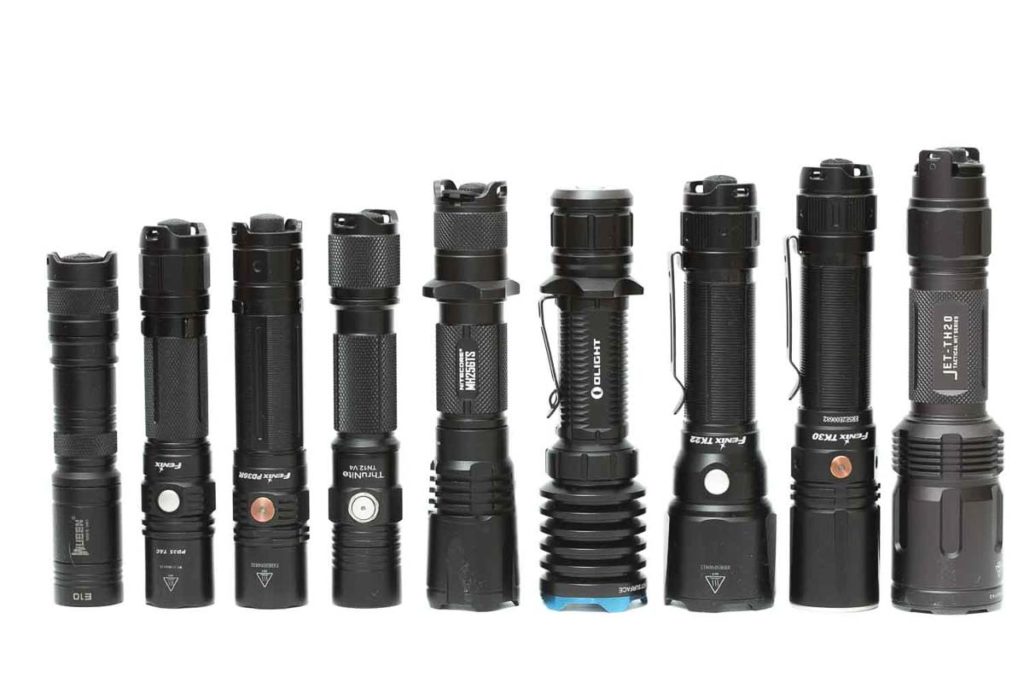
Driver & User Interface:
The Firmware is rather simple. The side-switch is used to change modes, going from Eco to Turbo. The tail switch is only used for power. The UI is rather simple.
Modes:
- Eco -Low – Med -High -Turbo
- Strobe
From OFF:
The side switch doesn’t do anything in the OFF position. The rear switch is a mechanical switch, so a double- or triple-click doesn’t do anything.
- Half-press rear switch: Momentarily turn on
- Full-click rear switch: (to last used mode, mode memory)
From ON:
- Rear switch: Single-click: OFF
- Side switch: Single-click: change mode
- Side switch: Double click: changes 2 modes
- Side switch: Press and Hold: STROBE
Blinky modes menu:
- It only has a police strobe by pressing the side switch while the light is on.
Lock-out mode:
- Fenix advises unscrewing the body from the head slightly to break the electrical contact. This will protect from any accidents that could happen.
PWM:
- Yes, ECO mode has visible PWM when you swing the flashlight quickly. You don’t really notice it, except when there is a fast-moving object in the beam.
Firmware / UI Conclusion:
- The UI is rather simple, and I would have liked to have a second switch on the rear end, just for direct-access to Strobe. You can definitely use it in 1 hand and still be able to access strobe, but you need to use your pinky. The other thing I kind of miss are shortcuts to Turbo and Eco mode.
Fenix PD36R charging
Fenix included a 21700 ARB-L21 lithium-ion battery. The only thing to keep in mind before using it is to take the plastic washer away. They even added a little notice, so you won’t forget this. See the picture below.
They added a protection board to the battery and therefore makes it too long for 99% of the battery chargers currently on the market. Thus you have to charge it inside the light, or get a 18650 charger with extra long bays! (Extra safety).
You should be able to use 18650 batteries when using a battery adapter. Fenix doesn’t provide one in the package, but some flashlight makers add one, just in case. But since this is supplied with a battery, I can totally understand they didn’t include an adapter.
On a side note: my Samsung 21700 40T (flat tops) don’t work because of the reverse polarity protection. The positive side doesn’t connect to the driver board because of this.
When you switch on the PD36R, the side switch LED will show the battery level by using 2 different colors. Red and Green.
- Solid green: 85%-100%
- Flashing green: 50%-85%
- Solid red: 25%-50%
- Flashing red: 1-25%
The manual states it can charge up to 3Amps. Be sure to have a high power USB charger. This will reduce charging times. 3A is really fast, but my USB charger can only supply 2 Amps. See the picture below.
When the battery finishes charging, the little LED indicator on the side of the head will turn green. The battery was at 4.23V after I took it out of the flashlight.
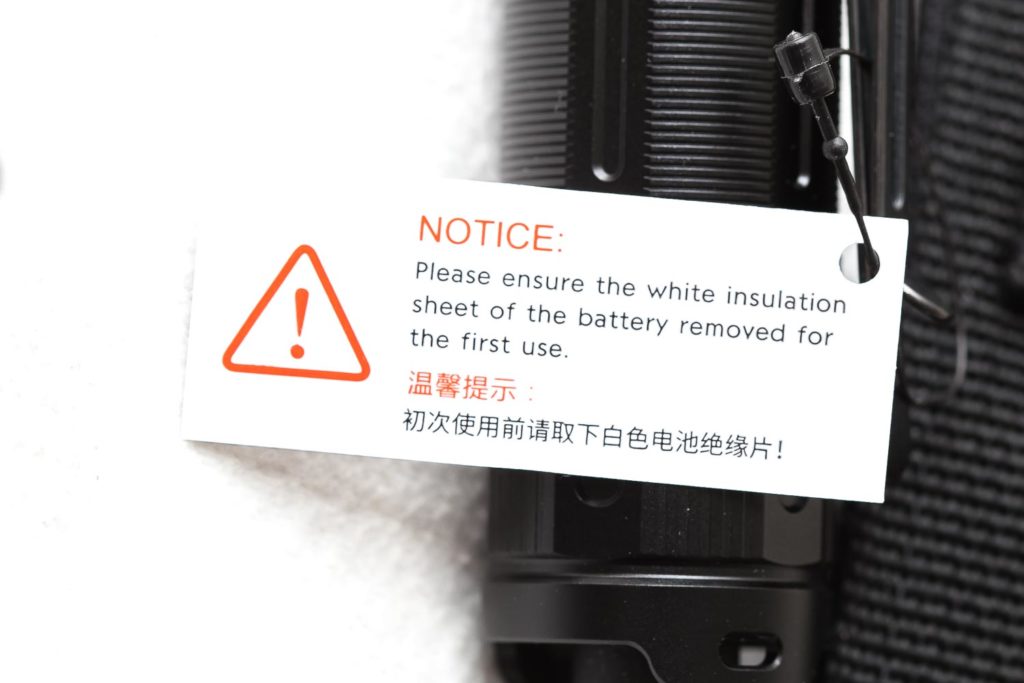
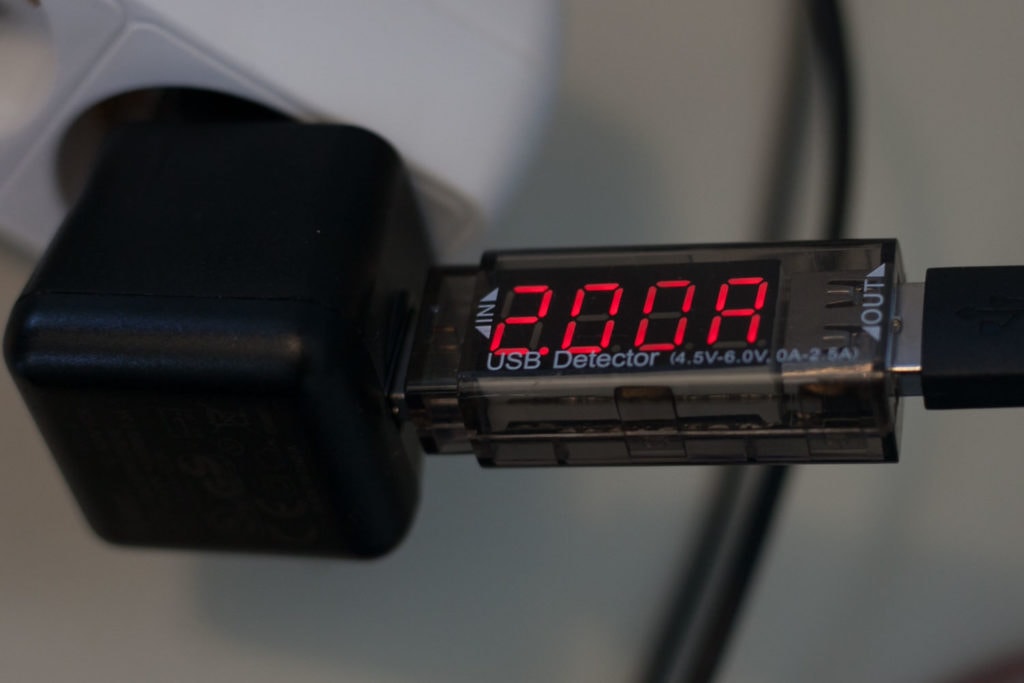
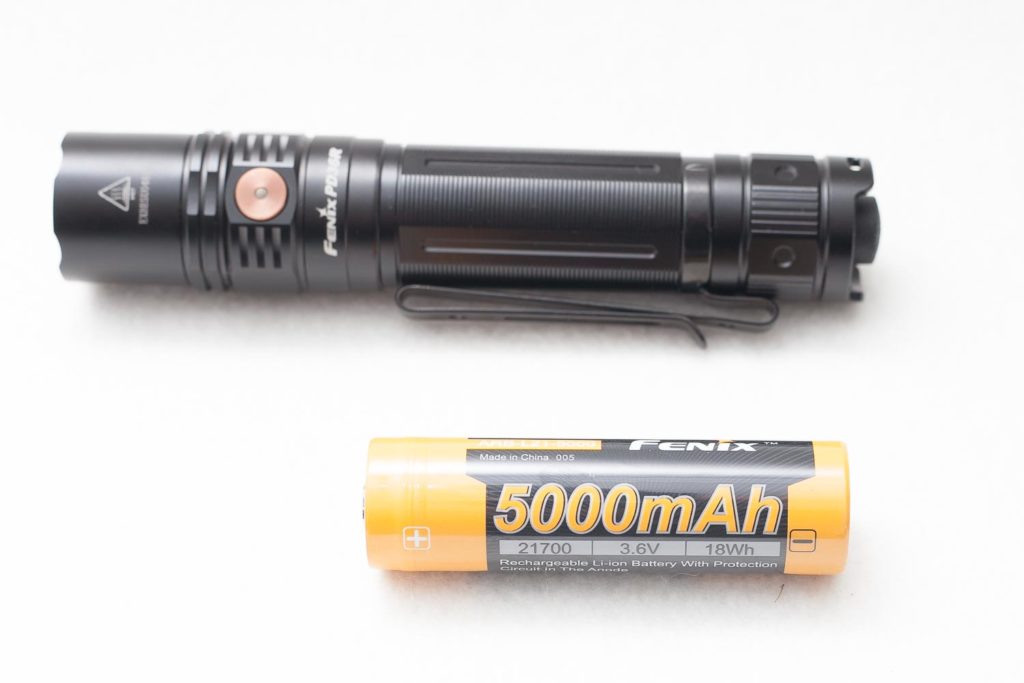
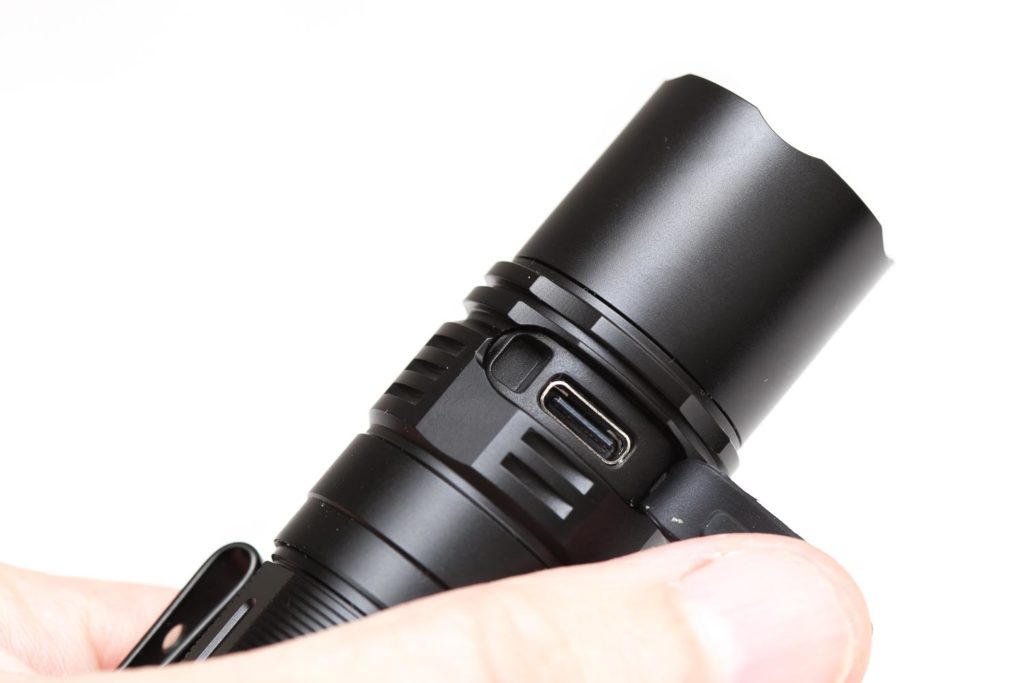
Performance:
All of my readings were taken from a fully charged Fenix 21700 ARV-L21. I recharged it between each test. I tested Amps with a Fluke 77III and original Fluke wires.
Amp measurement:
- Eco: 2mA
- Low: 21mA
- Med: 55mA
- High: 1.56A
- Turbo: 3.99A
Lumen measurements:
All output numbers are relative for my homemade integrated Sphere, set up with a Hagner E4-X Lux Meter for measurements. For extremely bright flashlights (above 5000 lumens) I am adding a Kenko PRO1D ND-16 filter. The base measurement is done with a Convoy S2+ that has been tested at 137 lumens.
Fenix PD36R tested with the included 21700 battery
| Mode | Specified | My measurements |
|---|---|---|
| Eco | 30 | 24.95 lm |
| Low | 150 | 151 lm |
| Med | 350 | 369 lm |
| High | 800 | 845 lm |
| Turbo | 1600 lm | 1761 lm |
Runtime:
From the runtime graph, we can see that Turbo doesn’t last so long and drops to 1000 lumens at 5:45 minutes. From 20 minutes onwards it produces a constant output of about 800 lumens. This lasts till 2 hours and 30 minutes. The PD36R starts dropping to 300 lumens at about 2 hours and 33 minutes. At 2.43 hours it drops to 100 lumens. 2:53 hours it drops… this lasts at least for another 1 hour.
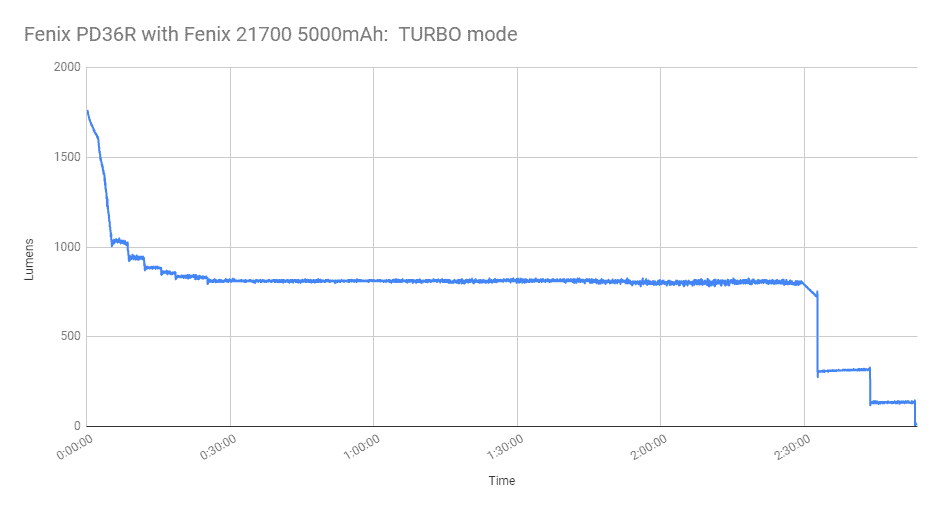
Throw measurement:
Measurements were taken indoors with the Skytronic LX-101 Lux meter. Unfortunately, the measured numbers were way over the stock numbers so I decided to do another test, using the professional Hagner EX-4 Lux meter, whose numbers were much closer to the Fenix numbers. I may return to using just the Hagner for Lumen en Throw measuring instead of using the Hagner just for Lumens and the Skytronic for measuring throw.
Measured with the Hagner EX-4
Turbo mode:
- Indoors (5m): 24500 cd = 313 meters / 0.195 miles
- Outdoors (10m): 21100 cd = 291 meters / 0.18 miles
Fenix claims 19,977 cd, so outdoors at 10 meters is relatively close to the claimed beam intensity. This shows that even measuring at 5 meters is unreliable.
21700 tactical flashlight comparison
Single 21700 tactical flashlights measured: These numbers are NOT from the specifications but measured by our team.
| Flashlight | Max Output (lm) | @30sec (lm) | Candela (cd) | Distance (m) |
|---|---|---|---|---|
| Acebeam L18 | 1249 | 1051 | 215,500 | 928 |
| Acebeam L19 | 1378 | 1242 | 430,300 | 1312 |
| Acebeam L35 | 6189 | 5609 | 57,000 | 477 |
| Cyanksy P25 | 4236 | 3300 | 11,275 | 212 |
| Fenix PD36 Tac | 2590 | 2079 | 18,675 | 273 |
| Fenix TK16 v2 | 2657 | 2222 | 40,900 | 404 |
| Fenix TK20R UE | 2571 | 2078 | 45,700 | 428 |
| Fenix TK22 TAC | 2742 | 2234 | 72,250 | 538 |
| Fenix TK22 v2 | 1622 | 1592 | 53,000 | 460 |
| NEXTORCH TA30C Max | 2822 | 2810 | 41,750 | 409 |
| Nitecore MH25S | 1979 | 1850 | 68,400 | 523 |
| Nitecore P10iX | 4223 | 566 | 8,700 | 187 |
| Nitecore P20iX | 4119 | 1342 | 16,000 | 253 |
| Nitecore P23i | 2795 | 2345 | 50,760 | 451 |
| Nitecore SRT6i | 1744 | 1691 | 99,617 | 631 |
| Olight Warrior 3 | 2598 | 2428 | 25,500 | 319 |
| Olight Odin | 1999 | 1884 | 25,750 | 321 |
| Olight Warrior X4 | 2817 | 2664 | 92,125 | 607 |
Interactive runtime graphs
Below are interactive comparison graphs for a selection of these tactical lights. Hover your mouse to see more details.
If you use a mobile device, rotate your phone horizontally or open this link for a closer look.
The following graph focuses on the first 10 minutes after activation. If the details are unclear, access the interactive graph through this link for a closer look.
And the last comparison, we zoomed in to show the differences even better. For the first 60 minutes after activation. Not clear? Use this link for the interactive graph.
Beamshots
The camera was set manually for each set of shots. This includes Aperture, White Balance, Exposure and Focus. The first set of shots are at a garage that is about 30 meters away (the exposure on the camera was set manually, and looks a bit dim. But the differences are better noticeable!

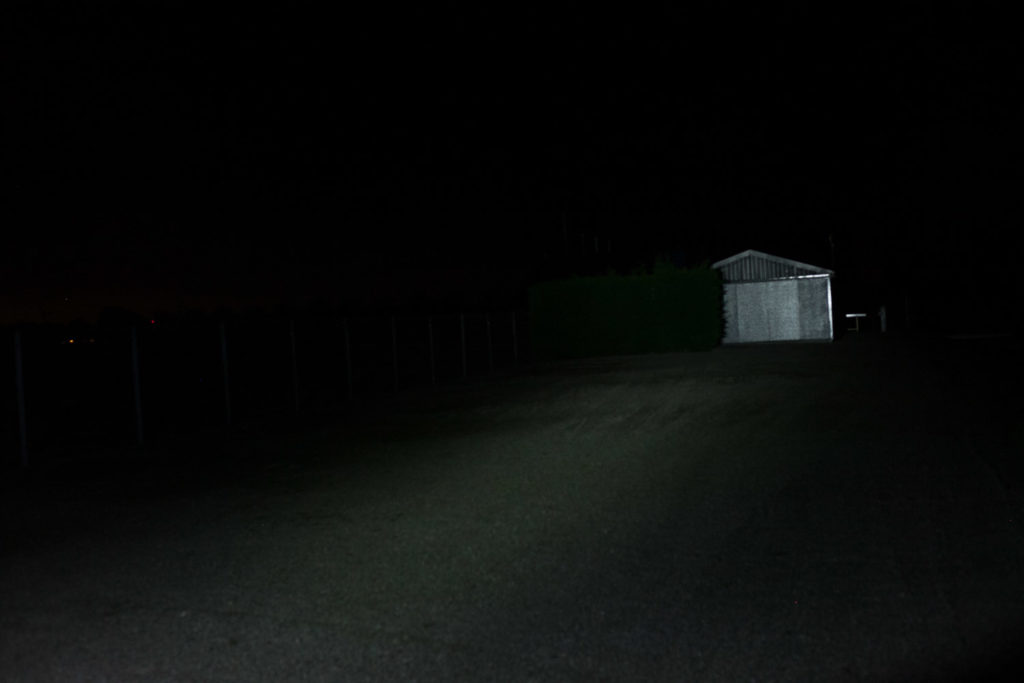
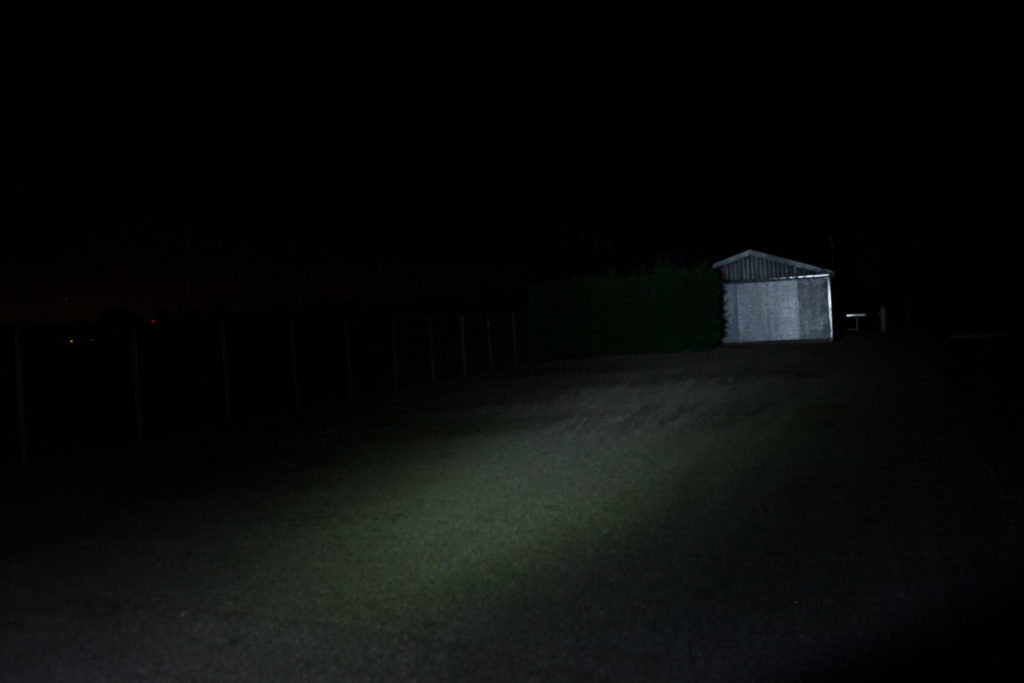
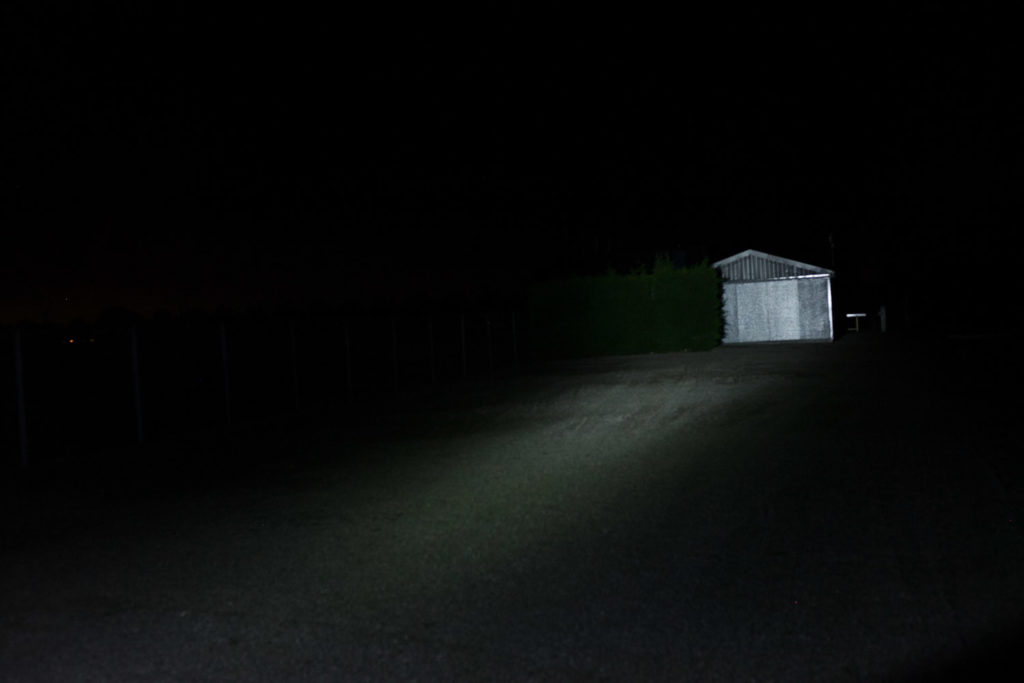




Final verdict
Pros:
- A great number of accessories, including a high quality 21700 battery
- Simple UI
- Great runtime
- Good output
Cons
- No shortcuts to Turbo, Eco or Strobe

Overall Rating: Excellent ★★★★★
I am giving the Fenix PD36R is the full 5-stars, since it has all the right ingredients. The emitter choice is good, it has a lot of nice accessories including a 2-way pocket clip, 21700 battery, and it has a built-in USB-C fast charger. The whole set makes it a great flashlight to gift to someone because there is no need to buy a dedicated lithium-ion charger! This saves cost and trouble. Highly recommended.
Fenix PD36R for sale
Get 10% off every purchase at Fenix Lighting US, by using our exclusive 1lumen discount code: 1lumen10
Make sure you also check out our Fenix PD36R PRO review. Linked products may link to the 2nd version.
1lumen selects and reviews products personally. We may earn affiliate commissions through our links, which help support our testing.